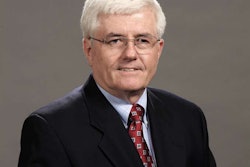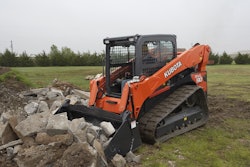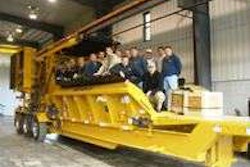Long Live the Hy-Hoe
 By Mike Anderson
By Mike Anderson
Anyone who has spent five minutes around construction equipment has a brand story to tell. Heck, by then, they probably already have their favorite brands, maybe even an affiliation or two. You know, “I’m a Case backhoe guy,” or “The only roller you’ll ever catch me on is a BOMAG,” or “When it comes to dozers, it’s Deere all the way.”
With very few if any exceptions, construction equipment aficionados will accept a jump seat to no other type of machine jockey – even the old car junkie – when it comes to recognizing, analyzing and downright loving the brands of their world.
And they’ll hang on to them, in some cases for many decades after the actual manufacturer has closed the book. Hence, you find clubs – some official, others entirely anecdotal or even coincidental – dedicated to preserving Galion graders, or Koehring excavators, or Raygo compactors, or Davis trenchers.
Generally, defunct brands become so in one of two manners: their owners go belly up; or those same companies are either bought outright by or decide to sell the particular brand to another corporation. The sad truth is that the latter route most often ultimately leads to the same conclusion as the first. “Pick your poison, Brand A: Die today … or slowly, painfully, forlornly just fade away.”
Die or simply fade away? Well, that may be a bit unfair … sometimes .There are equipment manufacturers who have understood the significance of a particular brand and done what they can to ensure that brand not only remains, but remains relevant. Ingersoll Rand, long before deciding it wasn’t going to play in the construction equipment game anymore, did anyone who cares about this industry a huge favor by establishing Bobcat Company. The Bobcat brand is, quite frankly, more important to this industry than whomever happens to own it at any particular time.
Any discussion of brand always brings to mind the case of Case. The brand’s been up and down, in and out, loved and neglected, admired and ignored by different owners at various times over the past almost 170 years. Yet, it remains … and that’s wonderful.
On the topic of remains, the most intriguing I ever stumbled across was a Nelson loader, tucked way back in a darkened corner of a broken-down shed on an old farm. A Nelson loader? I had no clue, so I quickly scrambled to the one place where I’d be certain to find one: www.heavyequipmentforums.com.
And, sure enough, HEF’s Steve Frazier delivered, reporting that, according to the Earthmover Encyclopedia, “Nelson loaders were built by Nelson Iron Works in Clifton, N.J. starting in 1957 with a 1.75-cubic-yard model. They were powered with a choice of either a gas- or diesel-fueled Hercules engine. They went on to make 2.25-, 2.65- and finally a 4-cubic-yard model produced in 1967. All models are reported to have been rigid-frames; it appears they had a rear steering axle similar to many early wheel loaders. After that, it seems the company faded away.”
Faded away? Of course, it did. Thankfully, memories don’t go quite so quickly.
Just a few weeks before the Nelson loader was spotted, a still-operable Hy-Hoe crawler excavator captured our attention while taking in an auction otherwise populated with farm equipment. Not to be confused with the “high-hoe” nickname used generically for excavators in some northern locales, the Hy-Hoe was a product of the Milwaukee-based Hydraulic Machinery Company, Inc.
And, needless to say, it was and always will be one heck of a brand.v












